An attractive vine with heart-shaped leaves, Hoya Kerry, with proper care, delights every year with fragrant flowers. She is considered a symbol of marital love in many countries, her flowers are included in wedding bouquets.
Material Content:
Plant description
Hoya Kerry is an evergreen plant with a long flexible stalk that grows around the pylon. The natural place of growth is the tropical forests of Southeast Asia, Laos and Cambodia. Found this hoya in 1911 in the jungle of Thailand.

Currently, several cultural forms of the species are known:
- with simple leaves;
- with pubescent leaves;
- with thin leaves covered with distinctly visible veins;
- variegated variegate hoya Kerry.
Smooth and strong stems of the plant reach a length of 3 meters. Fleshy leaves from 5 to 15 cm long resemble the foliage of succulents, the leaf plate has an interesting heart shape. Aerial roots easily form on the stem.
Five-petalled star flowers are collected in inflorescences-umbrellas of 15 to 20 pieces. Waxy petals are white, yellowish, or pink. Sweet nectar accumulates on them like dew, if there are no nets on the windows, insects will surely come to visit, to try refreshments. Flowering lasts several months, one flower lives 2 - 3 weeks.
It is interesting that each Kerry hoya flower changes color from the beginning to the end of flowering, gradually turning from white to red-brown from white. The color of the flowers changes at home and when moving the hoya to another place.
Basic growing requirements
Unpretentious hoya feels great in an apartment. It easily propagates vegetatively, and it is not difficult to grow it. For successful cultivation, it is necessary to maintain optimal indoor air temperature, observe watering and top dressing, and provide good lighting.
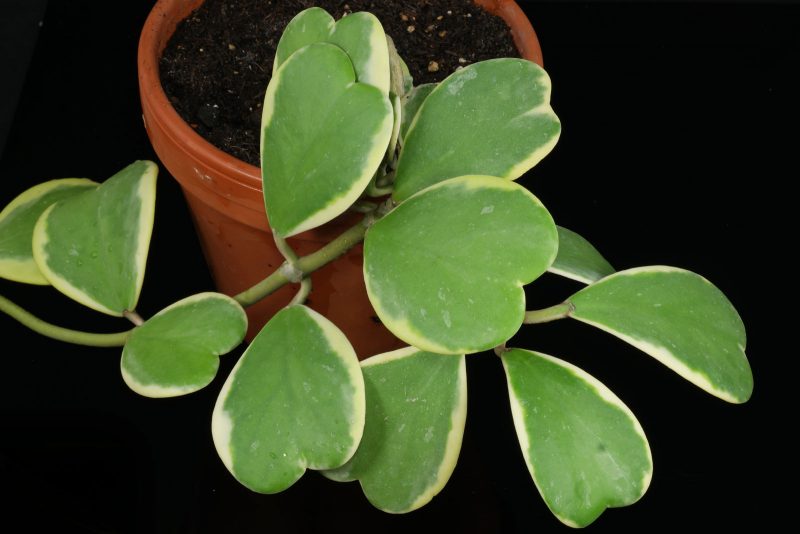
Hoya does not bloom in dark rooms.
With good care, the plant does not lose its decorative effect for 15 years. If you grow hoya vertically, you need to install a reliable support in the flower pot. Shoots over time become quite heavy and lignified.
Home Care
Plant care has its own characteristics in the summer and winter. The health of the flower largely depends on the right soil when planting and the quality of the water when watering.
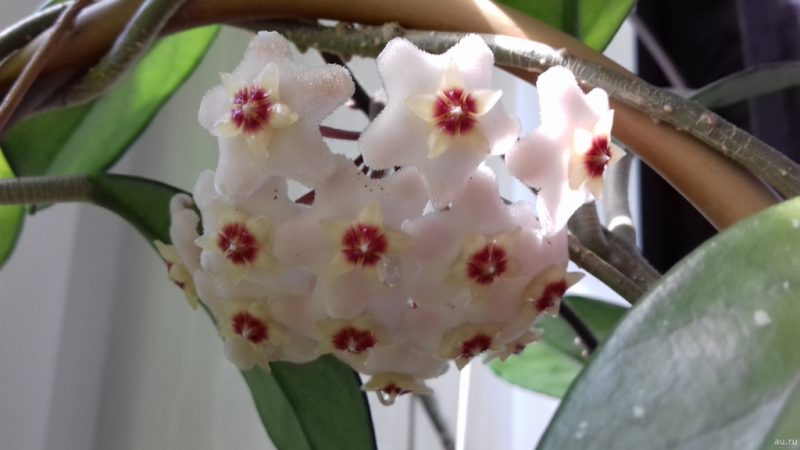
It is advisable to use rain or filtered water.
For hoya, sprinkling with warm water on the sheet in the warm season and in dry, well-heated rooms in winter is favorable.
It is interesting:Wisteria: care and cultivation
Features of the content depending on the season
Hoyas are sensitive to a lack of light. In summer, it is better to place them on the eastern or western windows, in winter - on the south.

The indoor air temperature is comfortable for plants ranging from 22 to 25 ° C. In winter, it should be a little cooler - from 16 to 18 ° C, so that the flower can relax and gain strength for flowering.
Soil Composition and Pot Selection
Hoya is transplanted every two or three years, in the spring. The soil is prepared by mixing coarse peat, coconut fiber, wood bark and perlite.
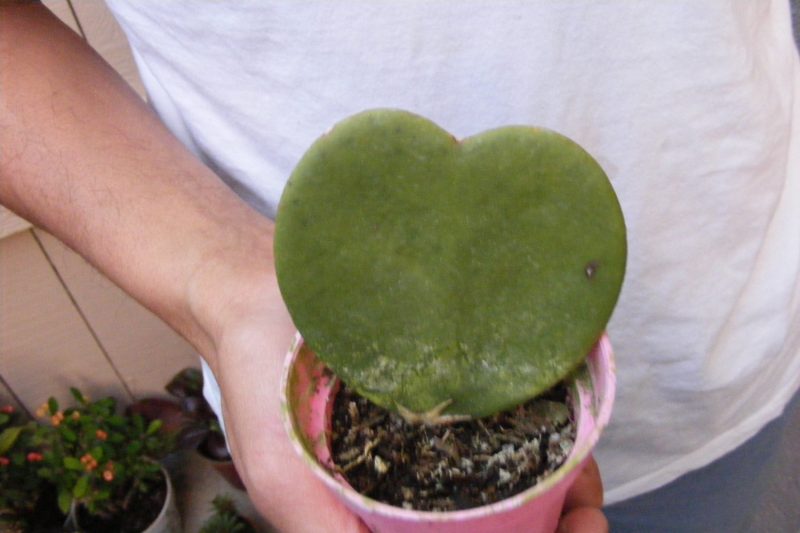
The plant does not need to be planted in a spacious pot.
For transplantation, a container is taken 2 cm larger in diameter. In a spacious flower pot, Hoya will deal with building up the root system, shoots and leaves, she will not have time to bloom.
Watering
Hoya is afraid of waterlogging the soil, it should dry in a pot until the next watering. Sometimes a plant is better to spray once again than to water.
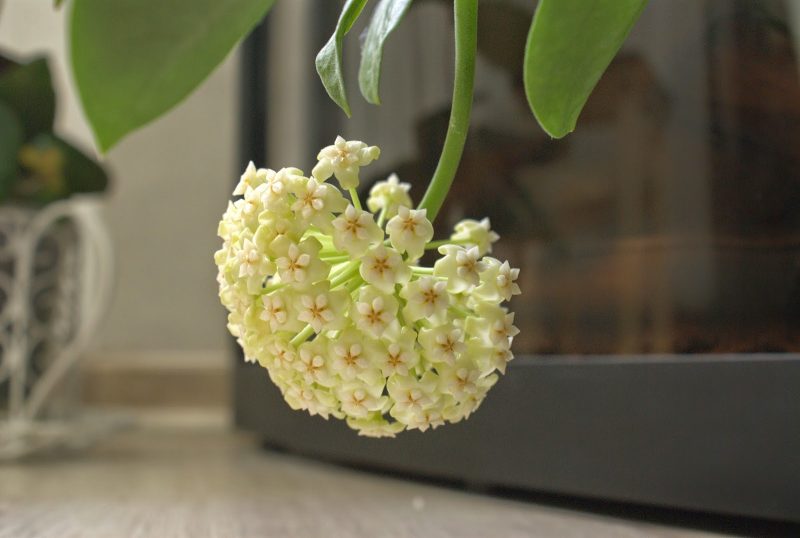
In the summer, watered abundantly, in the fall and winter moderately. Prolonged drying of the soil is also undesirable.
When the soil is moist all the time, and the roots do not breathe, the leaves begin to dry and fall off, the plant may die.
Fertilizer application
Feeding for hoya is important in the warm season. It is enough to do them 2 times a month, alternating mineral and organic. Kemira Lux is well suited for flowering plants and Biohumus. Organic fertilizers need to be careful, they can inhibit the flowering of hoya and cause fungal diseases.
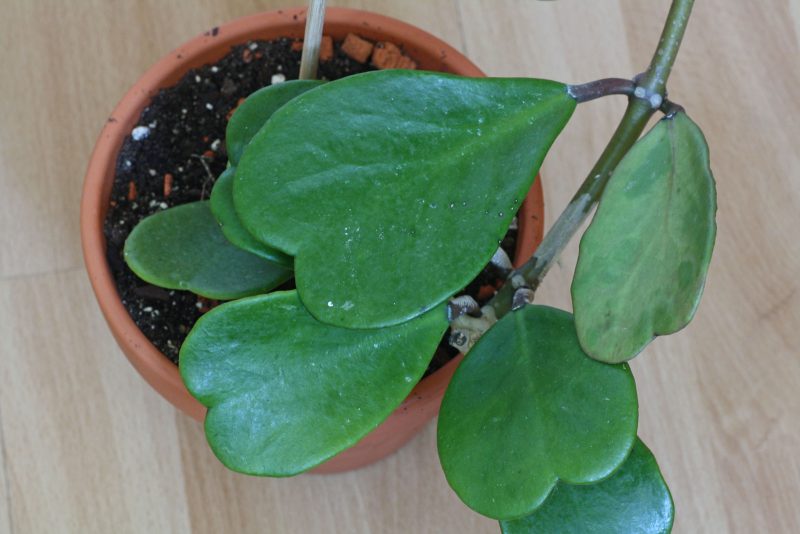
The plant can not be overfed, it will "fatten", increasing green mass, flowering can never wait. Fertilizing fertilizers in water is necessary in a weaker concentration than the manufacturer indicates.
Pruning and transplanting
Hoya blooms on peduncles of last year, so they are not cut. Formative pruning of shoots is done to awaken the lateral sleeping buds.
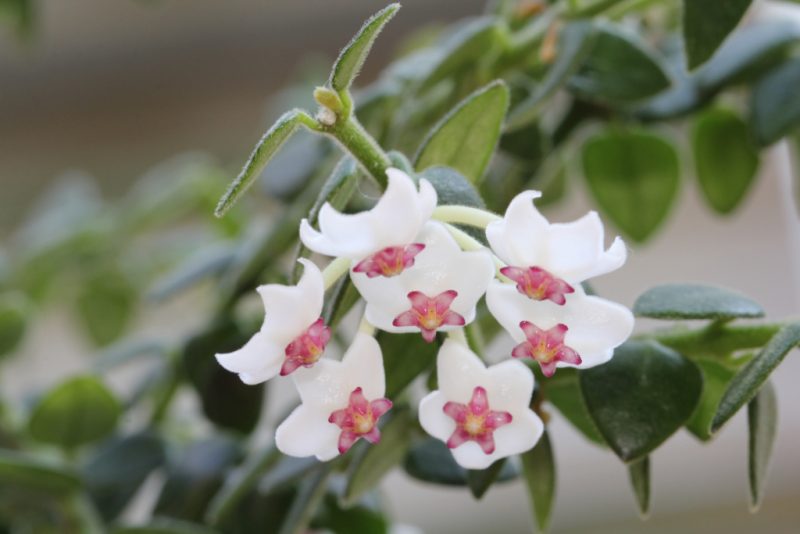
The plant is transplanted when the roots fill the entire space of the pot. Transplanting stimulates the growth and flowering of a plant.
Features breeding Hoya Kerry
Kerry's hoya is propagated by cuttings easily rooted in water or a substrate. It takes about 1 month in a bright, warm room. It is advisable to take cuttings from mature, but not yet lignified shoots, young rot more easily.
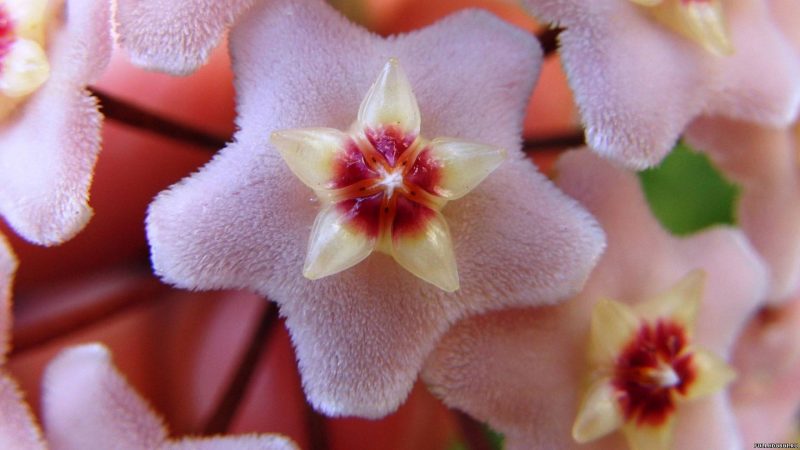
Suitable for rooting even individual fleshy leaves.
They are placed in a light moist substrate, make a “greenhouse” from a bag of plastic bottles. Cutting cuttings for rooting is best in spring, the room temperature should not be lower than 20 ° C. With good care, a plant grown from cuttings blooms for 3 years.
Hoya can be propagated by air layering. Part of the stem with a large number of root primordia is wrapped with wet moss, cling film and thread. The moss will dry, it needs to be moistened from time to time, lifting the film. When the roots grow (it will take about 2 weeks), the cuttings are cut and planted in the soil.
Plant diseases and pests
Hoya diseases can be provoked by insect pests, viruses, fungi and adverse external factors.
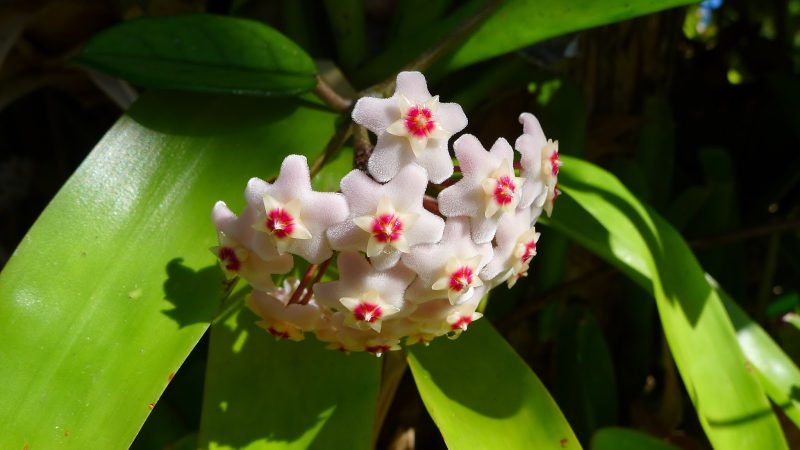
Decay of the root system from overflow is the most common problem of growing hoya.
If the disease damages the root badly and the plant cannot be saved, it is cut into cuttings and rooted in water or soil.
Of the insect pests in the hoya, insects, aphids, whiteflies and thrips parasitize. They cause drying of leaves and flowers. For treatment using the insecticide "Actara".
With great air dryness, a spider mite settles on the leaves. In the fight against it, the contact acaricide "Sunmight" helps well.
With the timely fight against diseases and pests, the Kerry hoya plant will not cause any special problems in care.












